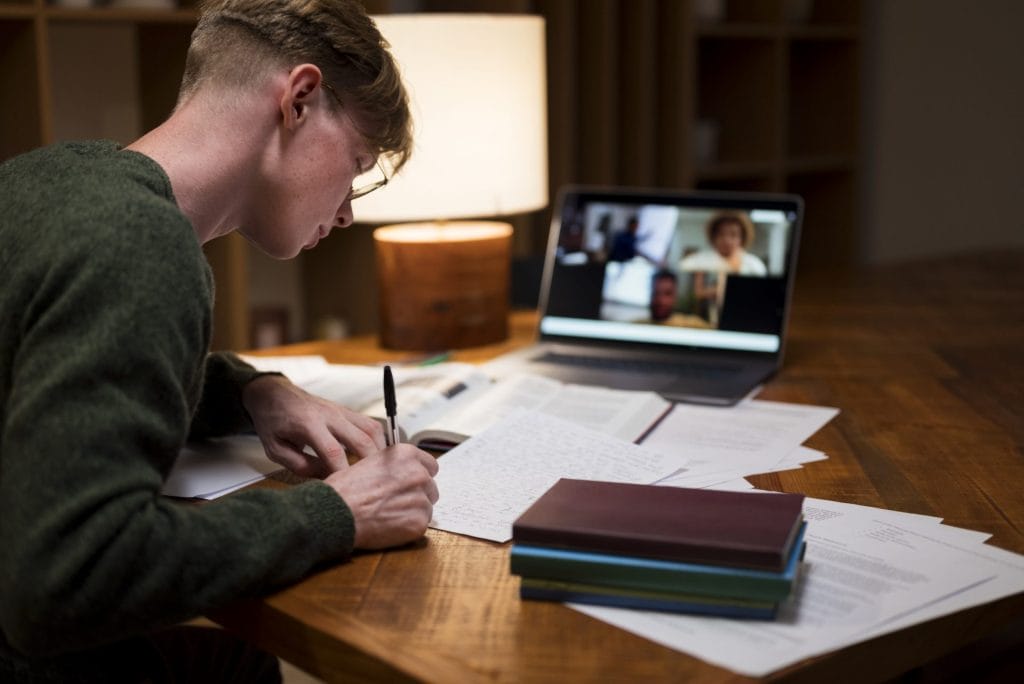Without the oversight of adults, many teenagers would likely devote nearly all their waking hours to screen use. Statistics on teens’ average screen time demonstrate this trend. Whether texting on smartphones or streaming videos on laptops, their screen time can quickly become excessive.
When your child insists that “everyone is doing it,” they might be right; technology is crucial to most teenagers’ educational and social activities. However, this doesn’t negate the potential downsides of unrestricted screen time.
Here are ways to manage your teen’s screen usage.
Demonstrate Positive Lifestyle Choices

Establishing screen time rules that apply to everyone in the household can be beneficial. Asking your teen to turn off their devices while you remain glued to the TV might be less effective than announcing it’s time for everyone to power down.
Teens are more influenced by your actions than words, so demonstrate responsible screen use yourself. For instance, let your teen observe you choosing to read a book instead of endlessly scrolling on your phone. Illustrate how you view media as a privilege and manage your screen time wisely.
If they have to use technology, encourage them to learn skills like photo editing. They can learn to improve photo backgrounds with tools like Canva Photo Editor, making their work more visually appealing and creative.
Customize Screen Time Rules for Your Teenager
Each teenager is distinct, so a universal approach to regulating screen time often falls short. Customizing screen time rules to align with your teen’s unique characteristics and requirements is important.
Some teens may require stricter boundaries due to self-regulation challenges, while others might benefit from more lenient rules that promote independence. Observing how digital activities affect your teen’s behavior and mood is essential.
For instance, if they can enjoy a 30-minute gaming session and seamlessly switch to their homework without becoming agitated, this might be an appropriate duration. However, if extended screen use leads to irritability or withdrawal, it might be necessary to reevaluate their screen time limits.
Engage your teen in open discussions about their screen time preferences and habits. If they enjoy watching cooking videos, consider trying new recipes together, blending their digital interests with real-world experiences.
Promoting a balance between screen-based hobbies and alternative, screen-free activities is vital. For example, if your teen is passionate about outdoor activities like soccer or hiking, encourage these interests as healthy alternatives to screen time.
If they unwind with funny videos, think about family activities offering relaxation and laughter, such as watching a comedy show together.
Create Screen-free Zones at Home
Set aside a couple of designated rooms in your home for screen activities. Limiting technology use to just one or two spaces encourages everyone to gather physically in the same area, whether for work or leisure. This also helps maintain certain rooms as screen-free zones for good reasons.
For instance, screens in the bedroom can disrupt sleep quality, so opt for an old-fashioned alarm clock instead of your phone. Each night, plug all devices into chargers located in a central spot, at least an hour before bedtime.
By keeping screens out of the dining room and kitchen, you preserve these areas for meaningful face-to-face interactions. Implementing these boundaries can make it easier for children and teens to take breaks from screen time.
Be the Change You Seek
As adults, we must reflect on our excessive use and reliance on technology. We should evaluate the time we spend on screens versus the time we dedicate to outdoor activities and personal interactions with friends, family, neighbors, and colleagues.
To truly assist children and teens in reducing screen time, we must also commit to reducing our own. Be ready to demonstrate the changes you wish your children to adopt. Begin by tracking your screen usage over a week without altering your habits.
Promote Physical Exercise
Motivate your teen to stay active regularly. Whether taking a walk, playing catch, dancing to their favorite songs, or helping out with yard work, these activities ensure they meet their daily physical activity needs.
Participating in activities as a family can make exercise more enjoyable and social for your teen. Physical activities are a break from screens and crucial for your child’s physical, social, and emotional development.
Treat Screen Time as a Reward
Over the years, screen time has shifted from being a luxury to being seen as a more commonplace right. In the past, having access to a family computer for just an hour felt like a special treat.
Nowadays, with screens readily accessible to teens around the clock, parents face the challenge of deciding when to allow or restrict screen time.
Emphasize that screen time is a privilege that must be earned. This might be a tough lesson initially, but it can instill lasting skills in your child, such as delaying gratification and controlling impulses.
Establish clear rules and boundaries for screen time, ensuring your teen understands which behaviors might lead to losing this privilege. A useful guideline requires completing homework and chores before turning on the TV, playing games, or using the computer.
Endnote
Screens have become a central aspect of our daily lives and will remain so. Although granting your teenager unrestricted device access or eliminating them entirely may appear simpler, achieving a balance is the most sustainable and advantageous strategy.
This balanced approach recognizes the realities of our digital environment while encouraging positive habits and interactions. Address screen time with curiosity and empathy, recognizing that effectively managing it is a process that demands patience and flexibility.
Also read:
Schools, Cell Phones and Your Teen
The Long-term Effect of Screen Time on Teenagers
Image attribution: Jeremy Bishop on Unsplash






